Mechanically Resonant Chemical Sensor Arrays Based on CMUTs
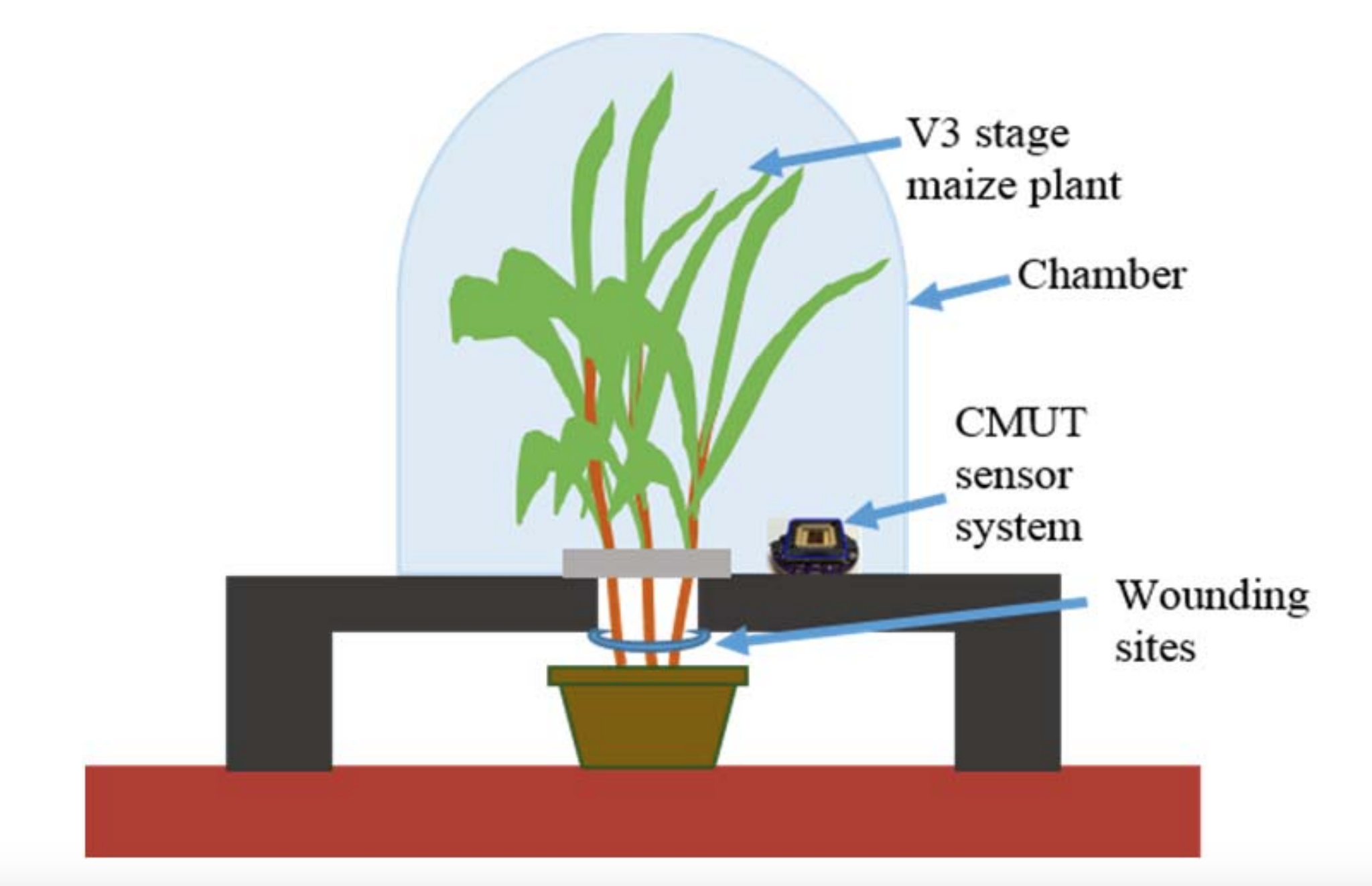
The goal of this project is to develop a low-power, wireless, wearable volatile organic compound (VOC) sensor. VOCs are chemicals commonly found in indoor environments that can cause eye, nose, and throat irritation and, long-term, liver, kidney, and nervous system damage. However, current VOC sensors, which primarily utilize metal-oxides, are power inefficient because they require heating to initiate electrochemical reactions. These sensors are also not selective, as they generally report only total VOC concentration.
Our group sought to address this issue by developing a VOC sensor using CMUTs. CMUTs can be used to achieve gravimetric (weight-based) sensing with high resolution, fast response rates, and easy electronic integration. Furthermore, they can be functionalized with different polymers to selectively adsorb specific VOCs.
For this project, CMUTs were fabricated by first patterning an electrode within a sub-micron cavity formed inside a borosilicate glass substrate. A silicon-on-insulator (SOI) wafer was then formed over the cavity, with an electrode patterned on top, to create a thin vibrating plate. The vibrating plate enables the CMUT to operate as an electrostatically actuated flexural-mode microelectromechanical resonator. A high DC bias is applied across the electrodes to pull the thin plate down, increasing the device’s electromechanical coupling and, thus, sensitivity. The mass sensitivity of the CMUTs scales with resonant frequency, so 5 MHz was chosen to achieve sub-ppm resolution. Multiple CMUT elements were fabricated on a single die and functionalized with different polymers to detect different VOCs (one was left as a reference).
A custom integrated circuit was designed to control biasing, oscillations, and measurements, and a power management unit was implemented for power control. A BLE chip (Simblee) was integrated for wireless data communication. A frequency-to-digital converter (FDC) was used to measure changes in oscillation frequency and detect VOC mass loading.
The system was tested with ethanol and achieved a 120 ppb resolution with an 80 uW average power consumption (with power cycling). The system was also tested with a maize plant – the plant was forcibly injured and the VOCs released were reliably detected by the system.
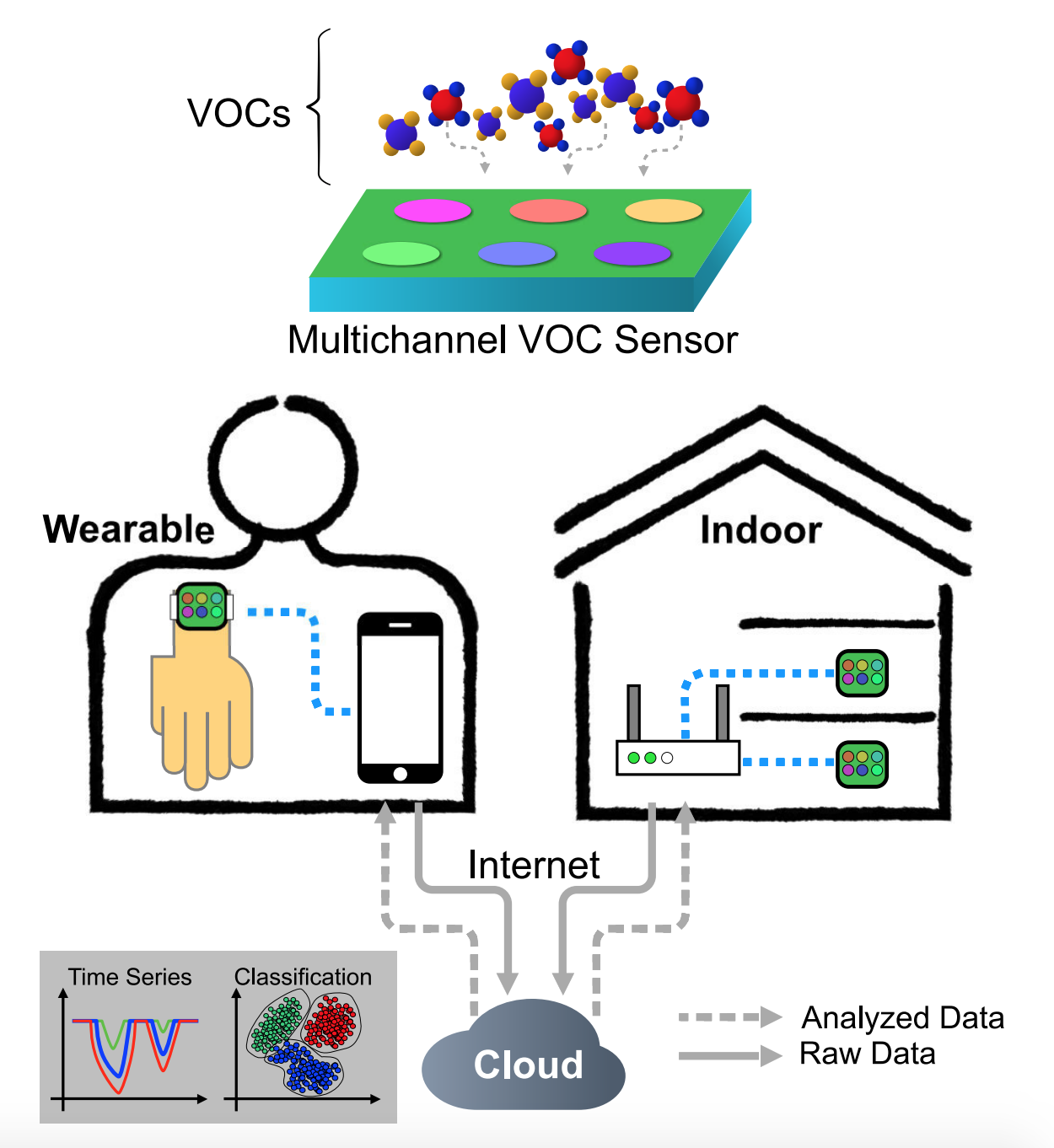
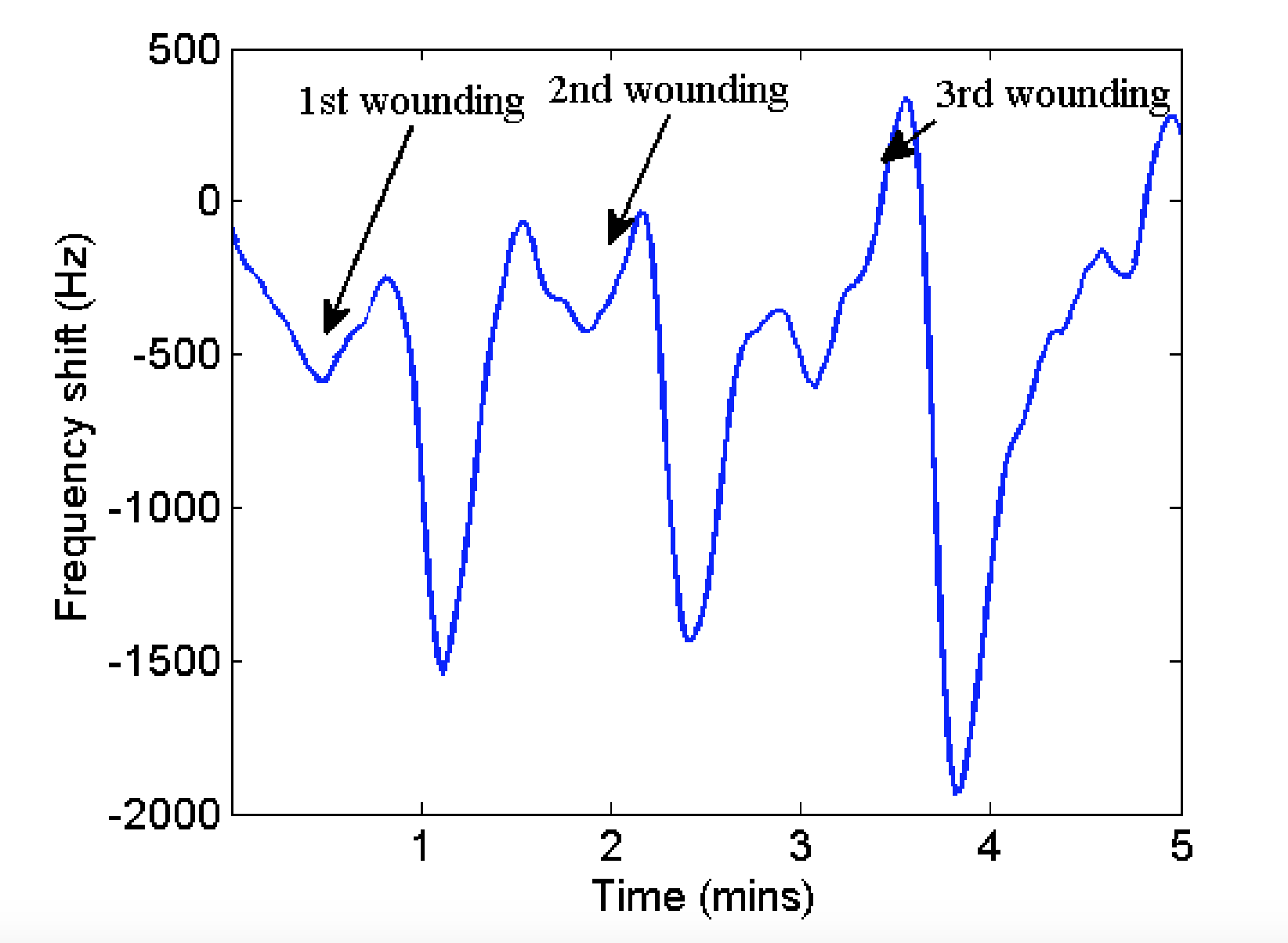
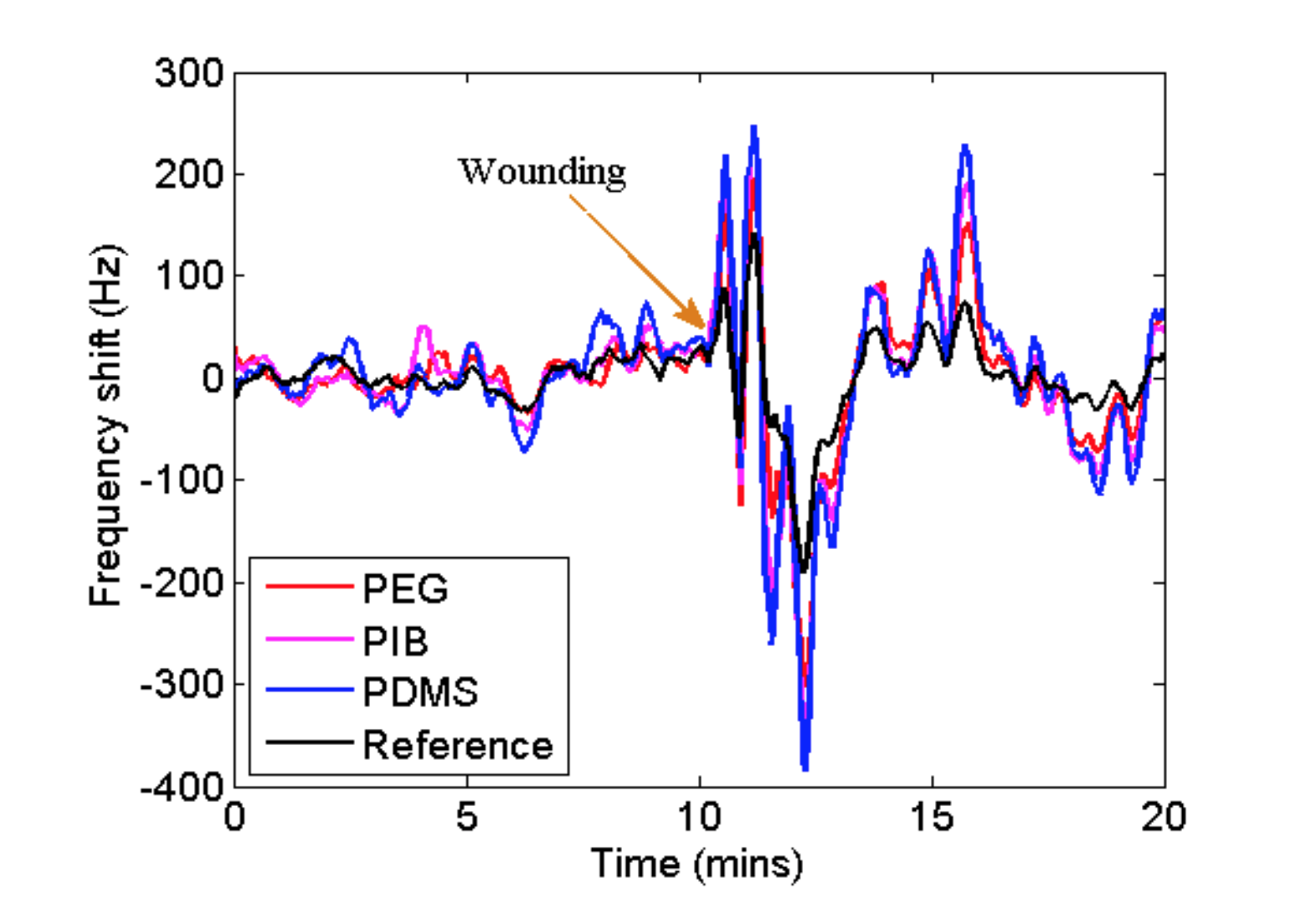
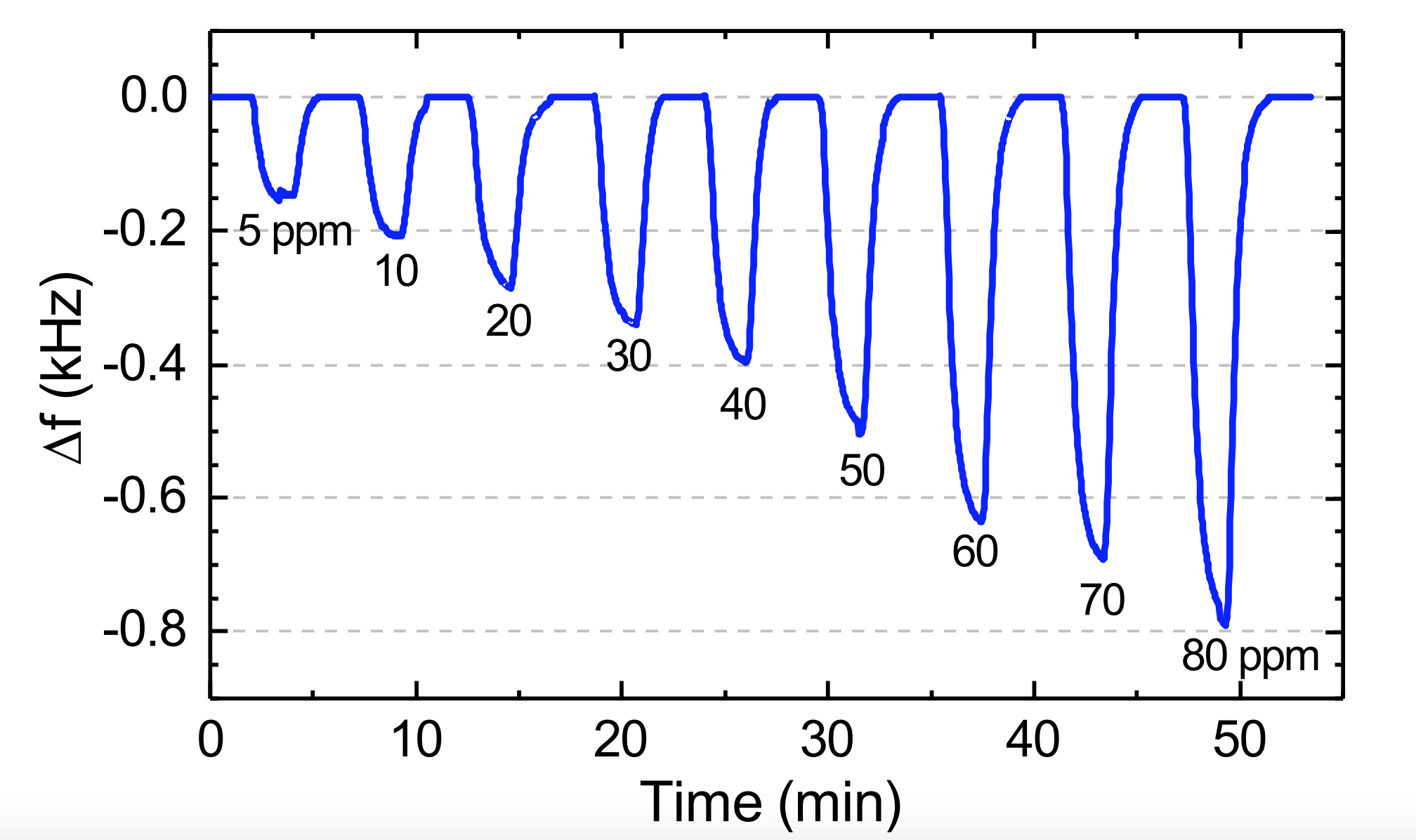
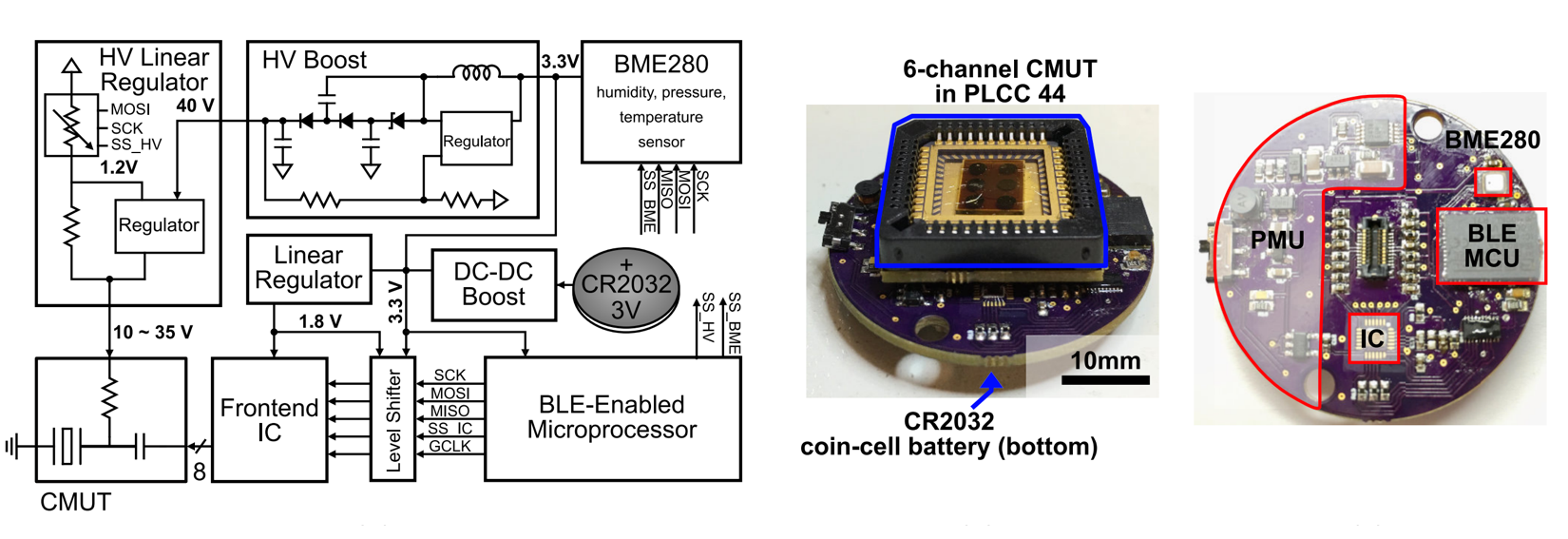
This work is supported by the National Science Foundation as part of the Nanosystems Engineering Research Center (NERC) for Advanced Self-Powered Systems of Integrated Sensors and Technologies (ASSIST) under Grant No. 1160483.